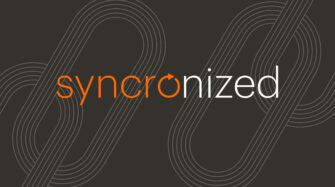The global market for managed services and MSP software is growing at an incredible pace. According to Forbes Business Insights, it was valued at $270 billion (USD) in 2023, and is projected to grow from $297.20 billion in 2024 to $878.71 billion by 2032.
Undoubtedly, numerous opportunities exist for managed service providers (MSPs) to grow by onboarding new clients. However, to get new clients, you need to follow an MSP best practice: Employ an MSP marketing strategy.
If you’re looking to market your MSP, this comprehensive guide explains how MSP marketing works, why it’s important, and how to develop an effective strategy.
How does MSP marketing work?
MSP marketing entails promoting your managed IT services among potential clients with the ultimate goal of making sales. MSP marketing is similar to marketing any other B2B business; it utilizes the same marketing tools and strategies, including:
- Social media marketing
- Email marketing
- Paid marketing advertising (Google Ads)
- Inbound marketing
- Content marketing
- Word-of-mouth marketing
- Direct selling
When it comes to tactics and sales funnels, the way managed service providers market does differ slightly. Additionally, each MSP’s marketing strategy should be customized according to their unique goals and needs.
The difference between MSP sales & MSP marketing
The terms MSP marketing and MSP sales are often used interchangeably, giving the false impression that they mean the same thing. However, while these two concepts have distinct differences, they are interdependent: One cannot work without the other.
MSP marketing refers to the process of creating awareness about your managed IT services brand. MSP marketing is not about sales or focusing on the technical details of your services. Instead, it’s about sharing information that educates your target audience about how managed IT services could help their business.
MSP sales relates to getting your potential clients to buy your managed IT services. Sales are the ultimate goal of MSP marketing strategies, and the sales strategy should tie into the MSP marketing strategy. The MSP sales process involves understanding how to illustrate the value of your services, tracking all interactions throughout the sales cycle, and giving potential customers the chance to ask questions. This is where understanding the MSP sales funnel and lead generation will be critical.
Essentially, MSP marketing is the “back end” part of the process where you create a solid foundation, and MSP sales is the “front end” part of the process. Typically, when sales and marketing teams work together, they achieve better results.
The importance of digital marketing for MSPs
In a survey of 125 global MSPs of all sizes, about 40% of respondents expressed concern that limited time and resources impede finding new business. Unfortunately, you have to find the time: It is impossible to grow your company without new clients, and you will go out of business if your existing clients leave. MSP marketing strategies are designed to prevent customers from leaving and pave the way for your business to grow and expand.
In particular, both traditional and digital marketing techniques are important for MSP marketing. Traditional marketing tactics such as word-of-mouth marketing have a powerful impact on the audience, but they are limited in their scope and reach. The managed services industry is global, and you need marketing techniques that can reach your audience wherever they may be, necessitating internet/digital marketing.
Common terms and phrases
To understand managed services provider marketing, it’s helpful to know some of the commonly used terms and phrases and their meanings:
- Leads: A lead is a potential client. Leads are the people who are interested in your MSP business as a result of your marketing efforts. The efficacy of your strategy depends on if that lead turns into your next potential customer.
- Lead generation: Lead generation refers to the process of finding potential clients (i.e., leads). Lead generation is the initial phase of MSP marketing.
- Lead qualification: Some of the leads generated by your marketing strategies may not be interested in your MSP business. Lead qualification refers to the process of narrowing down your leads to those who show genuine interest and the greatest potential for becoming clients.
- MSP inbound marketing: Inbound marketing is based on content marketing, whereby you create valuable content and post it on platforms where your target audience can see it. MSP inbound marketing involves developing content that educates your audience about managed IT services and their benefits. Content marketing is not sales-oriented; rather, it provides prospects information they need and are searching for that leads to your MSP as the solution.
- Target audience: A target audience is the group of people who may need and want to purchase your services.
- MSP outbound marketing: MSP outbound marketing means advertising to as large of an audience as possible as opposed to marketing to a target audience or qualified leads. Common outbound marketing channels include TV advertisements and cold calling.
- MSP email marketing: This technique utilizes emails to communicate with your target audience. It is one of the most direct and efficient forms of digital marketing.
- Call-to-action (CTA): This is a statement prompting the audience to take the desired action, like signing up for a free trial or upgrading to your premium MSP services. Phrases such as “get in touch today to learn more” or “click here to sign up” qualify as CTAs. Ideally, CTAs should be backed by an easy and quick onboarding process.
- Marketing campaigns: Marketing campaigns are strategic efforts designed to achieve specific business goals. They help establish clear objectives, identify target audiences, and develop cohesive messaging that aligns with overall business objectives. Well-defined MSP marketing campaigns enhance the effectiveness of outreach and engagement efforts.
What to include in the ideal strategy
An effective MSP marketing strategy includes three components:
- Target Audience – What type of business do you intend to speak to through your marketing campaign?
- Message – What information do you intend to send to your target audience? Is it relevant to their needs and preferences for managed IT services?
- Channel – Which platforms will you use to communicate with your target audience (e.g., television, email marketing, content marketing, etc.).
Ideally, your MSP marketing plan should detail what your marketing tactics will be, including the following reliable MSP marketing techniques.
Efficient digital marketing techniques
MSPs have many online marketing tactics to choose from. Three of the most effective tactics are search engine optimization, having a high-functioning website, and email marketing.
Search engine optimization (SEO)
93% of all online interactions begin with a search engine (like Google) and less than 1% of users get to the second page of search results. That means ranking on the first page of results is critical. The average click-through rate (CTR) for the number one spot in Google search results is 27%; the number 10 spot has a CTR of just 2.4%. SEO is the best way to land on the first page of results.
SEO involves improving every aspect of your online platforms and the content therein to meet Google’s standards so they include your site at the top of the SERP. Content marketing and website design are two ways to help your website appear at the top of search results.
Website design
A high-functioning website loads quickly, is responsive to different devices (mobile and PC), and is simple to navigate. The website should prioritize informative content that answers your visitors’ questions above making your sales pitch. It is also worth noting that website design is an integral component of SEO.
Email marketing
Out of all the digital marketing strategies, email marketing is still one of the most efficient marketing tactics. It entails sending emails to specific audience segments with two primary intentions:
- Educating them about the value of your services
- Prompting them to take action The intended action may range from signing up for your free trial to upgrading to premium services.
Besides content, timing and frequency are also integral aspects of email marketing. The idea is to send the right number of emails at the best times — you shouldn’t send so many emails that you flood inboxes, and you shouldn’t send so few emails that your audience forgets all about you.
Get the Syncro guide for MSP marketing
Need help with your marketing strategy? Learn how to get your MSP marketing efforts going without consuming additional bandwidth. Download our eBook today.
Share












